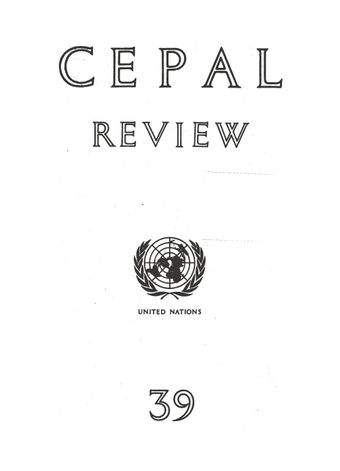-
The centre-periphery system and unequal exchange
- Source: CEPAL Review, Volume 1989, Issue 39, Dec 1989, p. 135 - 154
- Spanish
-
- 31 Dec 1989
- Previous Article
- Table of Contents
- Next Article
Abstract
The economic crisis that has affected the Latin American countries since the early 1980s and is threatening to expand beyond the present decade has reactivated the debate about trade and development and the role of Latin America in the international division of labour. This paper seeks to contribute to that debate by restating ECLAC’s original centre-periphery theory within the framework of the “unequal exchange” discussions. The paper aims to show that the ECLAC theory, after nearly 40 years, still contains the elements for a more satisfactory interpretation of world trade than other trade theories. After a brief introduction on comparative advantages and trade theory, the paper discusses the main elements of ECLAC’s centre-periphery model. This model is then contrasted with the views of the main contributors to the unequal exchange debate, with the aid of the price and distribution relations of a two-country two-commodity international trade model in which the two nations are replaced by a “centre” and a “periphery”. The last sections incorporate ECLAC’s demand elasticity argument into the discussion and analyse the model’s policy implications for peripheral countries.





